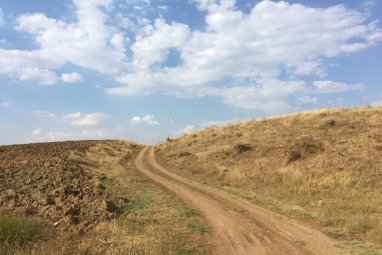Scientists have made a sensational discovery in the highlands of eastern Uzbekistan — they have found traces of two ancient cities that once flourished on the most important trade route of the Middle Ages, snob.ru reports with reference to the BBC.
The use of modern technologies, including drones and remote sensing methods, has made it possible to identify urban settlements that existed in the period from the 8th to the 11th centuries. At that time, these lands were under the rule of the Turkic dynasty and were famous for their rich iron ore deposits.
The largest of the discovered cities, Tugunbulak, is spread over an area of 120 hectares at an altitude of 2,000 meters above sea level. The second settlement, Tashbulak, was located even higher — at around 2,200 meters, although it occupied a smaller area.
It’is interesting to note that even today only 3% of the world’s population lives at such altitudes. In the Middle Ages, life and trade in such conditions required special endurance and adaptation.
The first signs of Tashbulak's existence were noticed back in 2011, when archaeologists discovered ancient burials and numerous household items. However, the scientific community was skeptical about the find for a long time, and only in October of this year was the study officially published in the prestigious journal Nature.
According to archaeologist Michael Frachetti from Washington University in St. Louis, the team had to overcome significant mistrust from colleagues who doubted the scale and significance of the find.
This discovery is especially valuable, since archaeologists traditionally concentrate their searches on flat areas. The discovery of Tashbulak and Tugunbulak significantly expands our understanding of the development of urban settlements in medieval Central Asia.













